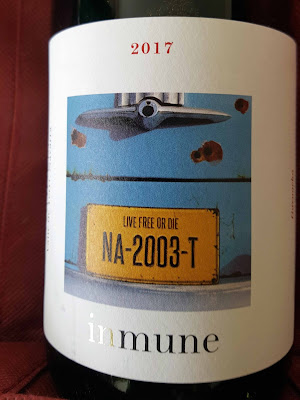Wilson on Wine 2020
Your friendly easy-to-read guide
In six short years, Wilson On Wine has become the goto book for wine-lovers keen to prepare themselves for what can often be the confusion of a visit to the wine shop. Shelves and shelves of attractive, and sometime unattractive labels, so a little time reading the current just released edition will help you make a shopping shortlist.
The well-laid out book, with over 350 pages, starts with an editorial, a few paragraphs on Natural Wine, advice on Food and Wine, and a description of wine styles. And then you’re into the wines, 163 in total, ranging over all the styles and in price from under a tenner to over two hundred euro (for the Krug Grandé Cuvée Brut).
So how do you work your way through all the info. Actually, it is not too difficult, thanks to the use of comprehensive indices. You’d be surprised how many reference books come up short on this kind of aid. The first index is by Style, Country, Price. Move towards the rear then for the Index by Wine (name), followed by the all important Index of Stockists.
Colour coding is another excellent aid for the reader. The wines are colour coded under headings such as Sparkling Wine, Crisp Refreshing White, Fresh and Fruity White, Rich and Rounded White, Light and Elegant Red, Rich and Full Bodied Red, Natural Wine, Fine Wine and Fortified Wine.
John was in great form at the recent O’Brien’s Winter Wine Festival in Cork’s Clayton and we had a chat as he signed my copy (reduced from 12.99 to a tenner on the night) and took us through the four wines he was showing on the night, all available at O’Brien’s. You do probably know that John is one of Ireland’s leading wine writers and wine correspondent for the Irish Times.
Cantina Orsogna’s Vola Volé Trebbiano D’Abruzzo (DOP) 2017 was first up. I very much enjoyed this dry refreshing organic white a few weeks back.Very light straw colour, clean and bright. Aromas are of light intensity, more floral than fruity. Lightly apple flavoured (more citrusy if it warms up a bit in the glass) with a noticeable acidity, it is light and crisp and easy to drink. Light seafood dishes are a suggested match. Perhaps with a Goatsbridge trout salad.
This cooperative specialises in crafting organic and sustainable wines from local grape varieties. The Vola Volé range of wines are dedicated to the protection of bees (featured on the label) by protecting their habitat from pesticides and herbicides and is certified by Biodiversity Friend.
Next we moved to the Loire to sample the Les Secrets de Sophie, a 2018 Sauvignon blanc from the Touraine. This comes under the Crisp Refreshing White style and is light with a snappy dry finish. John suggests trying it with a goat’s cheese salad, tomato salad, or Greek salad. “Sauvignon loves salads.”
John was smiling as he poured our samples of the Domaine Coudoulis Dédicace Lirac 2017. Lirac is one of nine villages in the Southern Rhone that has its own name as the AOC name. The others are Rasteau, Vinsobres, Gigondas, Beaumes de Venise, Vacqueyras, Tavel, Chateauneuf-du-Pape and Cairanne (most recent 2018) and all nine are regarded as crus.
 |
| September's harvest from Coudoulis Facebook page |
Why was he smiling as sipped this one? Well it is something of an iron fist in a velvet glove, packing an abv punch of 15%. But it is an excellent smooth mouth-filling Rhone from an appellation just across the river from Chateauneuf du Pape.
We stayed in the same style for the final tasting: Lunaria Ruminat Primitivo 2018, a big jammy organic red from Sicily. John describes it as a full-on Primitivo, “powerful yet soft, it delivers a mouthful of fruit”. Just like Zinfandel, its New World counterpart.
So there you are. If you’d like a bit of friendly easy-to-read guidance before you hit the wine store this Christmas, or indeed at any time, do pick up a copy of Wilson On Wine.


































